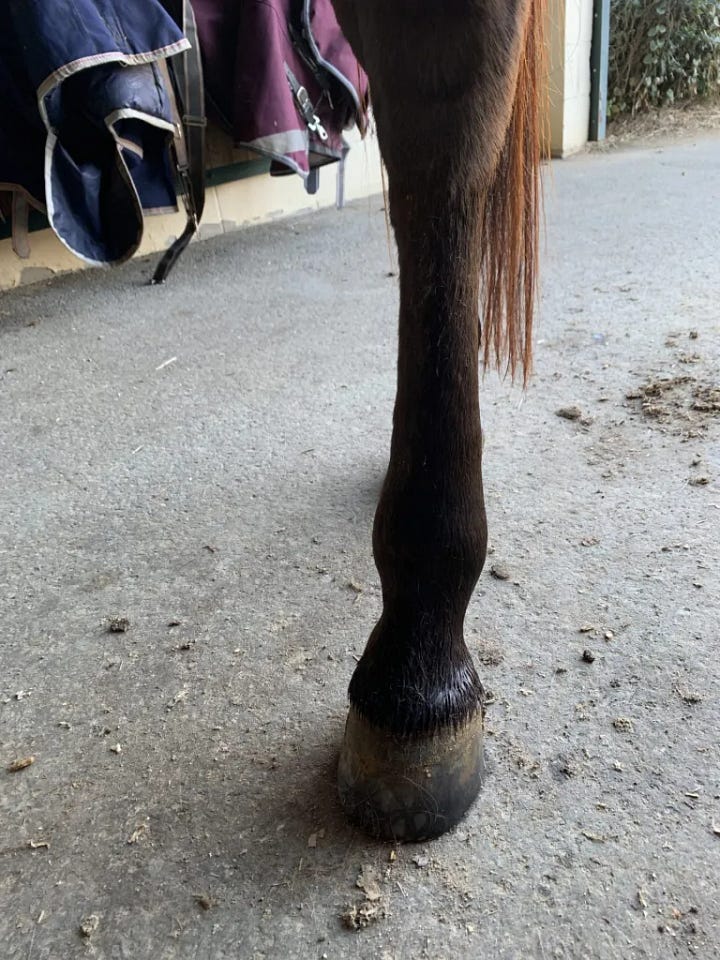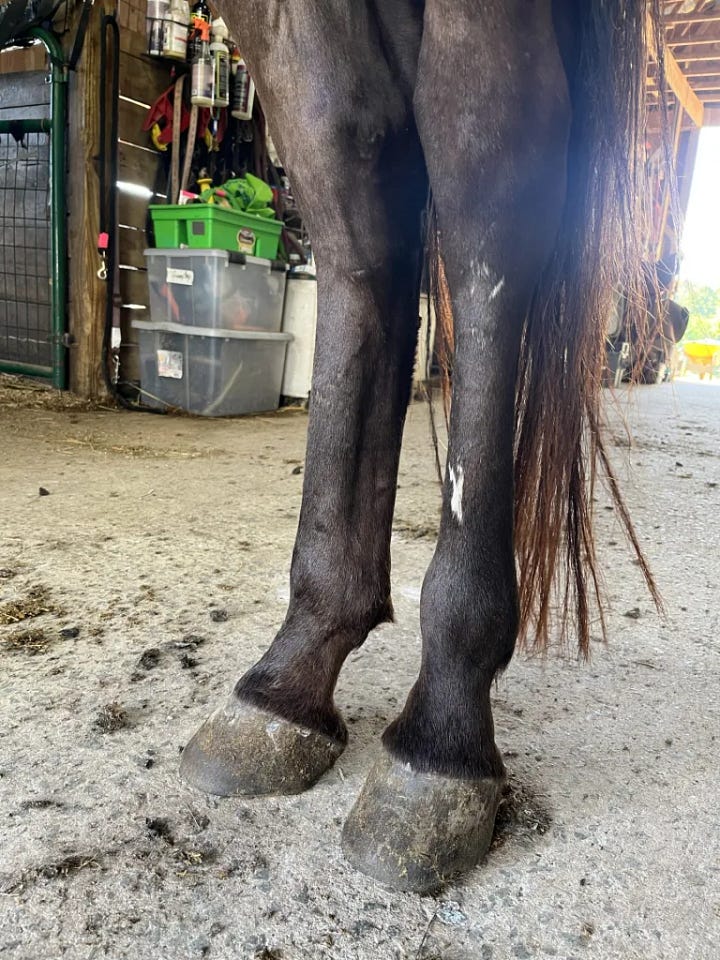Fractured Splint Bone: Overall Costs
In the ninth installment of Violet’s fractured splint bone saga, I describe the overall cost of treating her fractured splint bone.
One of the biggest considerations of treating a splint fracture is the associated cost. Because splint fractures are not typically life-threatening injuries, conservative treatment options are available and often the best choice for some horses. One of the first things my vet said to me when we realized we were dealing with a splint fracture was that if Violet was a broodmare or pasture pet, she would probably recommend conservative treatment. However, since Violet is my only horse and a horse I would like to continue riding for the foreseeable future, surgery would be the best option for us.
To provide some insight into the actual costs of surgical treatment and professional rehabilitation, I have documented all of the costs related to Violet's splint fracture over a six-month period below.
Diagnostics
In Violet's case, diagnostics were not particularly extensive. Her injury was fairly obvious at first since it was an open cut. When the cut did not heal, an x-ray quickly verified that she had a fractured splint that would require surgery.
Farm Calls: $80
Medications: $100
X-Ray: $185
TOTAL: $365
Hospitalization
To save you from pouring over four pages of ambiguous, itemized medical codes, I have grouped her hospital charges into recognizable categories. I did this so that it's easy to read through approximately how much things cost. This does not imply that I was able to opt in or out of any of these charges. The only items on this list that I added were the Regional Limb Perfusions.
My original estimate was $3500, and I had to pay that upfront. As you can see, my bill ran over the estimate, and I had to pay the additional sum at discharge. Additionally, Violet left one day earlier than expected, so her final bill would have been even more if she had stayed the full five days as planned.
This is roughly how much I spent per category for the four days she spent at NCSU:
Equine Hospitalization: $313.32
Equine Care Kit: $20.75
Daily Treatment: $135.50
Equine Surgery Exam Bundle: $170.02
Additional Tests: $101.25
X-Ray: $183.25
Ultrasound: $236.75
Anesthesia: $989.50
Surgery: $1202.78
Bandaging: $328.29
Game Ready Cold Therapy: $105
Regional Limb Perfusion: $81
Medications: $714.15
TOTAL: $4581.56
Post-Operative Care
While not strictly necessary, multiple vets strongly advised letting my regular vet keep Violet to oversee post-operative care. Because of her bandage bow, careful wrapping and lasering were going to be key to a successful recovery.


Photos from Day 1 versus Day 153. The Day 1 photo doesn't do justice to how swollen her leg was the weekend before I dropped her off at NCSU, but unfortunately, I don't have any photos from that time. I believe it was completely worth it to send Violet to my vet to ensure her tendon healed properly, but you be the judge.
Lay-Up Service: $560
Bandaging: $581.25
Lasering: $950
Hauling: $450
Medications: $287
TOTAL: $2828.25
Recovery & Rehabilitation
These numbers reflect the 4.5 months after Violet left my vet's farm. Since these numbers also include board and farriery—which I would be paying in any case—they are not purely added costs. In the interest of transparency, I'm including the full out-of-pocket cost for those months.
Board Costs: $4800
Farm Call + Ultrasound: $275
Farrier: $100
Medications: $50
Hauling: $200
TOTAL: $5425
Total Cost
And the total cost over six months was...
OVERALL TOTAL: $13199.81
Math is not my strong suit and deciphering and keeping track of so many bills is challenging, so give or take a bit on this total. However, even as an approximation, it is not for the faint of heart. Luckily, I have Violet insured with Major Medical coverage, and I received the full payout on her policy. Even the lowest tier Major Medical coverage takes the sting out of these large, unexpected medical expenses, so I highly recommend insuring your horses if they are eligible.
I don't post this to discourage anyone from considering surgery for a fractured splint. In fact, I have no regrets about the surgery, aftercare, or rehab, despite the financial (and emotional) costs. There are also ways to keep costs down that just did not work for our particular situation, including:
No surgery. As I intend to keep Violet as my primary riding horse and the risk of suspensory impingement was high, this wasn't a viable option for us. Additionally, the orientation of her splint fragment made any kind of standing surgery impossible. Other cases and different situations may make a conservative, no-surgery approach a feasible solution. (Surgery might also be more or less expensive in other parts of the country.)
No vet aftercare. Most owners would choose to do the aftercare themselves. However, given the condition of Violet's tendon, it was the right decision for us.
No rehabilitation facility. I am not experienced enough to bring a horse back into work from an injury, so I felt like I needed professional help. More experienced owners with more equipped facilities may feel differently.
It's been a long road, but we finally made it! Hopefully, we won't have any non-routine vet bills in the near future.


